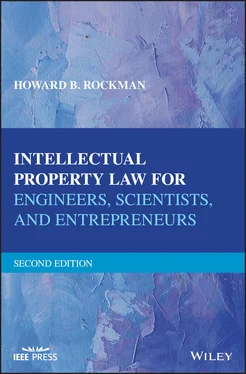By January 1889, Boston had the first electric streetcars in the United States, which would be the first to operate underground 8 years later. Boston’s last carriage‐drawing horse was retired in 1987. Within a year of the Richmond system, electric power began to replace the more costly horse‐drawn cars in many cities. By 1890, over 200 electric street railways, half incorporating Sprague’s equipment and 90% based on his patents, had begun operation or were planned on several continents. In 1890, the General Electric Company, which manufactured most of Sprague’s equipment, bought Sprague’s electric streetcar business. Sprague left to establish the Sprague Electric Elevator company, and developed and installed electric elevators in several New York buildings before selling that business to Otis Elevator Company.
By the 1920s, most United States municipalities had abandoned horse‐drawn cars for electrically powered streetcars. The rapid growth of streetcar systems resulted in the ability of people to live outside of a city and to commute into the city for work on a daily basis. The success of streetcars also gave rise to inter‐urban lines, which were basically streetcars that operated between cities, and also served in remote rural areas.
The electric streetcar continued to be improved. Tiny, four‐wheeled cars were replaced by heavy, eight‐wheeled cars, providing a much greater carrying capacity. Wooden car bodies were replaced by steel ones. In time, the electric streetcar became the primary means of urban transit.
Sprague’s later experience with elevator controls led him to develop a multiple unit system of electric railway operation, which accelerated the development of electric streetcar operation. In a multiple unit system, each car of the train carried electric traction motors. Using relays energized by train‐line wires, the engineer or the motorman commanded all of the traction motors in the train to act together. For lighter streetcars, there is no need for a locomotive, so each car in the train can generate revenue. Sprague’s first multiple unit order was from the Southside Elevated Railroad, the first of several elevated railways locally known as the “L” in Chicago. This success was followed by substantial multiple unit contracts in Brooklyn (New York) and Boston (Massachusetts).
Sprague’s electric traction inventions allowed a significant expansion in the size of cities, while his elevator developments later on permitted greater concentration of workers in commercial sections of urban areas, and increased the profitability of commercial buildings. Over a hundred years later, his inventions also resulted in the development of light rail and rapid transit systems that still function on the same principles today.
Today, only Toronto still operates a streetcar network essentially unchanged in layout and mode of operation as originally constructed. St. Charles streetcar line in New Orleans is generally viewed as the world’s oldest continuously operating streetcar line.
Between 1895 and 1929, almost every major American city had at least one streetcar labor strike. Sometimes they lasted only a few days; however, more often, the strikes were marked by almost continuous and sometimes violent conflict. At times, the strikes amounted to prolonged riots and civil insurrection. The 1929 New Orleans streetcar strike was one of the last of its kind. The rise of private automobile ownership took the edge off the impact of the strikes.
Here is where the history of streetcars gets interesting, at least to me. As the twentieth century moved forward, the heavy expense of track construction and maintenance ultimately rendered streetcars uneconomical. In the United States, streetcars began to be supplanted by automobiles and buses in the 1930s, which trend accelerated during the 1940s and 1950s. Readers who are aged 70 years or older may wonder what happened to all the trolley cars that they rode when they were younger.
There is no question that the rail trolley car systems of the early twentieth century have been almost entirely supplanted by the operation of buses and a few light rail train systems these days. Many commentators write that the Great Depression of the 1930s resulted in the closure of many streetcar lines in North America, but the onset of WWII delayed the closure of some streetcar lines as civilians used them to commute to war‐related factory jobs during a time when rubber tires and gasoline were rationed. After WWII, automobile use continued to increase, and was assisted in the 1940s and 1950s by the passage of the Trans‐Canada Highway Act of 1948. Also, the Federal Aid Highway Act of 1956 in the United States was enacted. Some commentators have stated that declining ridership and traffic jams caused on city streets by streetcars are often cited as reasons to shut down the remaining streetcar lines in various cities. However, while these facts may or may not be true, the demise of city streetcars systems was aided by several companies in the United States who took unlawful measures to increase the sales of their products.
The abandonment of city streetcar systems in the mid‐twentieth century led to accusations of a conspiracy that a combination of automobile, oil, and tire manufacturers purposefully shut down streetcar systems to further the use of buses, gasoline, and rubber tires, which products the alleged conspirators were selling.
On April 9, 1947, nine corporations, including National City Lines, Pacific City Lines, General Motors, Firestone Tire Company, Mack Manufacturing Corporation, Phillips Petroleum, Standard Oil of California, and Federal Engineering Corporation, along with seven individuals, were indicted by the U.S. Justice Department, criminally charging them with, among other things, conspiring to monopolize certain portions of interstate commerce in the public transit sector, in violation of Section 2 of the United States Sherman Anti‐Trust Act. The defendants were charged, more specifically, with having conspired to monopolize the portion of interstate commerce in the United States consisting of the sale of buses, petroleum products, tires, and tubes used by local transportation systems in those cities in which two of the defendants, National and Pacific, owned, controlled, or had a substantial financial interest in the streetcar systems. The indictment stated that the supplier defendants, which were Firestone, Standard Oil, Phillips, General Motors, and Mack, would furnish capital to defendants, National and Pacific, and these two latter companies would purchase city streetcar companies, dismantle the streetcar systems, and then cause their operating companies to purchase from the supplier companies substantially all their requirements of tires, tubes, and petroleum products. Or the city transit systems were converted from trolleys to buses. It was also alleged that the money made available by the supplier defendants would be utilized by National and Pacific to purchase control of, or a financial interest in, local public transportation systems in various states. It was also alleged that National and Pacific and their operating companies would not renew or enter into any new contracts for the purchase or use of products, such as tires, tubes, oil, and buses, other than from the supplier defendants once the conversion was completed.
The facts upon which these allegations in the indictment were based are that, as of April 1, 1939, one of the defendants, National City Lines, Inc., had risen from a humble beginning in 1920, operating two second‐hand buses in Minnesota, to ownership or control of 29 operating transportation companies located in 27 cities in 10 states across the United States. When the indictment was returned in 1947, defendants Pacific and National had expanded their ownership or control to 46 transportation systems located in 45 cities in 16 U.S. states. The supplier defendants were manufacturers and marketers of buses, tires, tubes, and petroleum products, necessarily used by the local operating bus companies of National and Pacific City Lines.
Читать дальше












